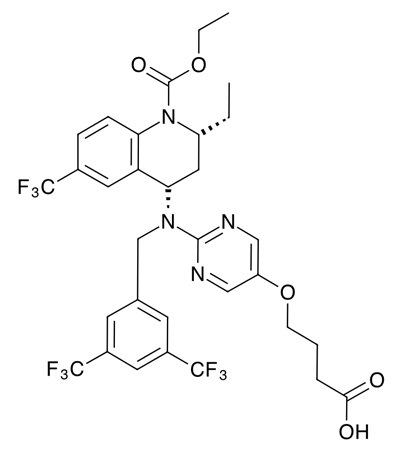Dutch company NewAmsterdam Pharma is investigating the potential of obicetrapib, a low-dose oral cholesteryl ester transfer protein (CETP) inhibitor that’s designed to be used as an adjunct to maximally tolerated cholesterol-lowering therapies in this patient population.

Although CETP inhibitors have a chequered past, the company believes that obicetrapib may improve outcomes when combined with statins or ezetimibe.
An 8-week randomised, double-blind, placebo-controlled trial has been done with 120 patients with elevated lipid levels who were already receiving high-intensity statin treatment.1
Subjects were given 5 or 10 mg of obicetrapib or a placebo on top of their statins. Both gave a significant decrease compared with the placebo; they also showed much greater reductions than the placebo for apolipoprotein B and non-high-density lipoprotein cholesterol, and a notable increase in HDL-C.
A Phase II trial has been done with 97 patients with elevated cholesterol levels on stable high-intensity statins to investigate its potential when dosed with ezetimibe.2
Subjects were given 10 mg of obicetrapib, either with or without 10 mg of ezetimibe or a placebo, for 12 weeks on top of the statins. LDL-C decreased from baseline to week 12 by 63% for the combination, 44% for obicetrapib alone and 6.4% with the placebo.
Both active groups also gave significant reductions in non-HDL-C, apoB and both total and small LDL particles. It was well tolerated with no safety issues. A double-blind, randomised Phase II trial also investigated the effectiveness of obicetrapib in 104 Japanese subjects.3
In the 8-week trial, subjects who had not reached target LDL-C levels were given obicetrapib (2.5, 5 or 10 mg/day) or a placebo on top of 10 or 20 mg/day doses of atorvastatin or 5 or 10 mg/day of rosuvastatin.
All doses gave a significant reduction in LDL-C, apoB and non-HDL-C, whereas HDL-C increased; the median changes at the highest dose were –46%, –30%, –37% and +159%, respectively. It was well tolerated with no adverse safety signals.
The company has also announced (by press release) positive topline data from a 52-week randomised, double-blind placebo-controlled Phase III trial in patients with heterozygous familial hypercholesterolaemia whose lipid levels were not well controlled by statins.
In 354 patients given 10 mg of obicetrapib on top of maximal statins, it achieved its primary endpoint of a significant reduction in LDL-C — reducing it by 36% at day 84 and 42% at day 365. It was well tolerated.
Further Phase III studies are under way, including one that involves coadministration with ezetimibe.
References
- S.J. Nicholls, et al., Nat. Med. 28, 1672 (2022).
- C.M. Ballantyne, et al., J. Clin. Lipidol. 17, 491 (2023).
- M. Harada-Shiba, J. Atheroscler. Thromb. (2024): doi:10.5551/jat.64828.
